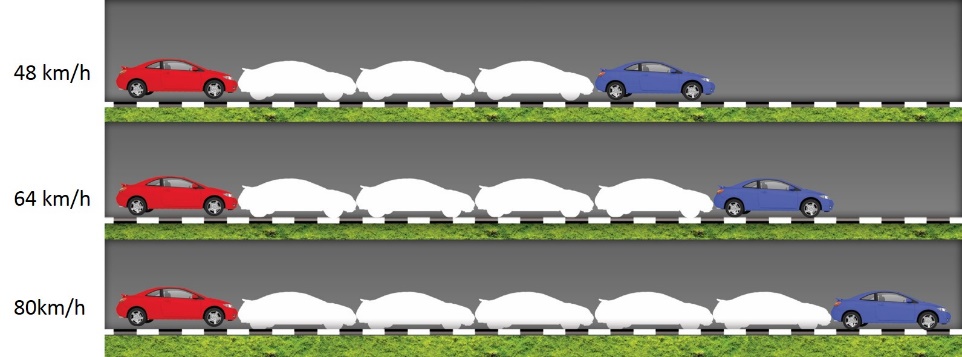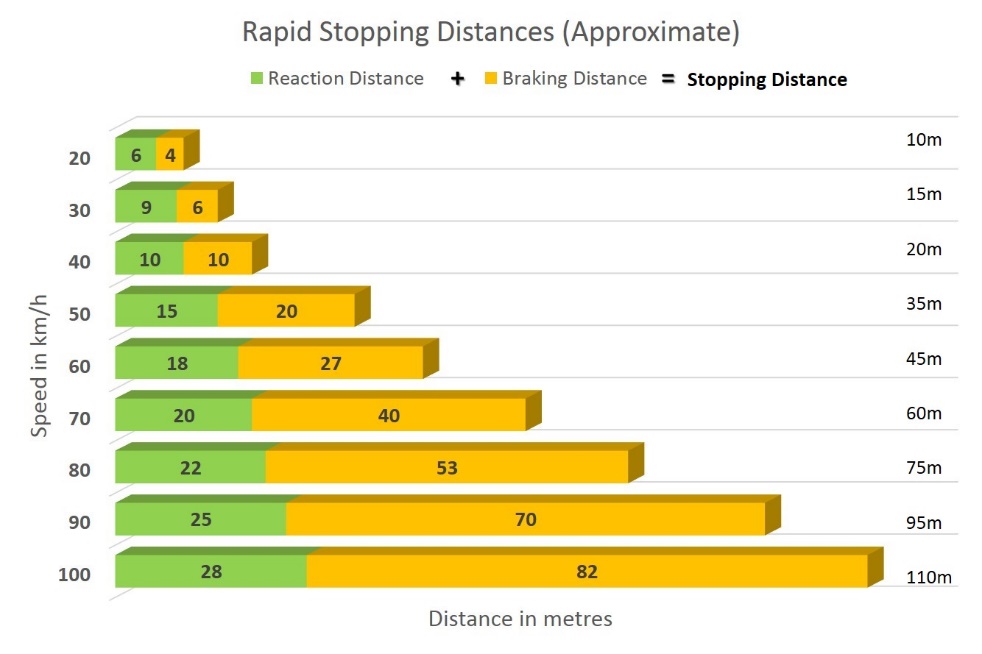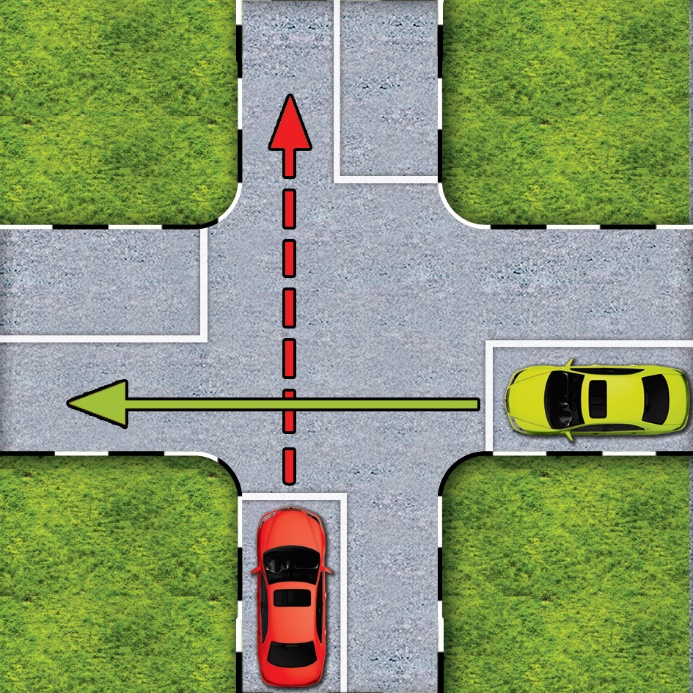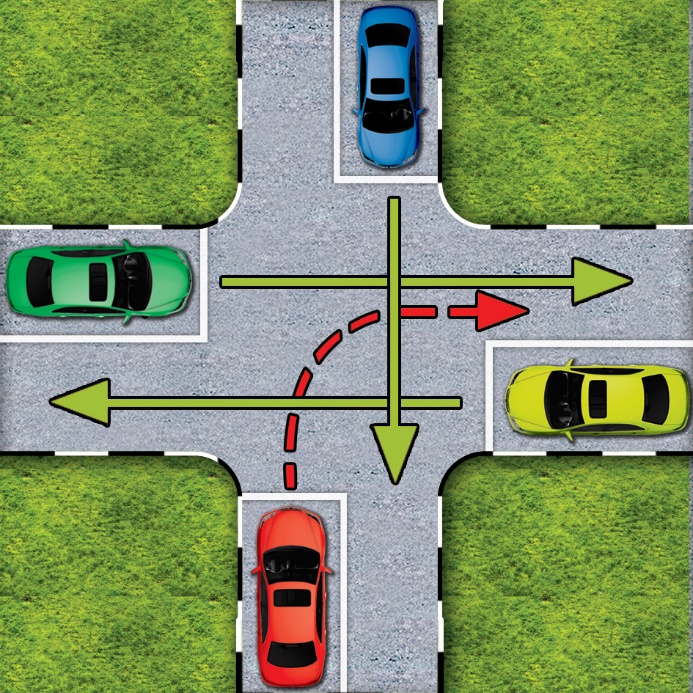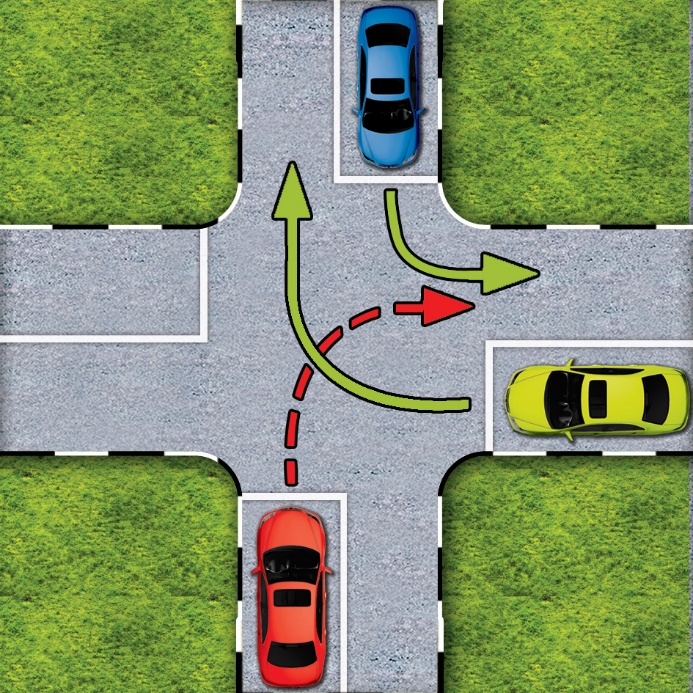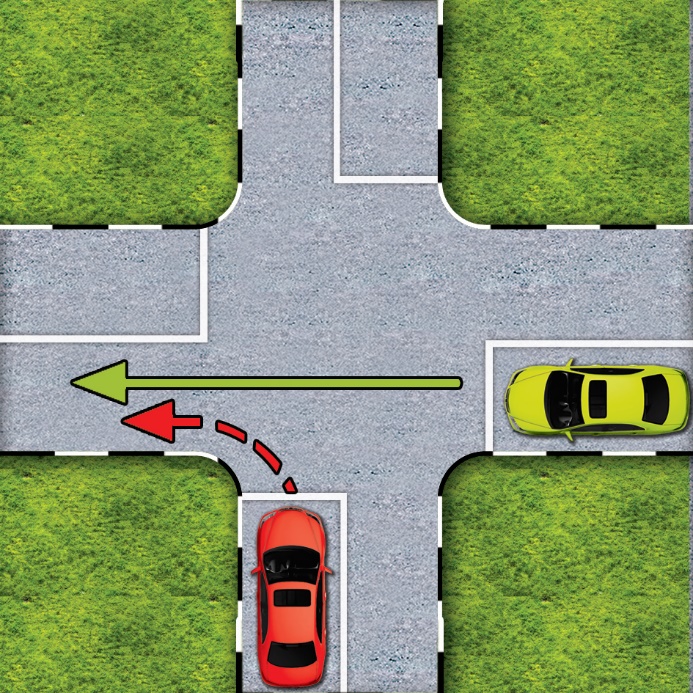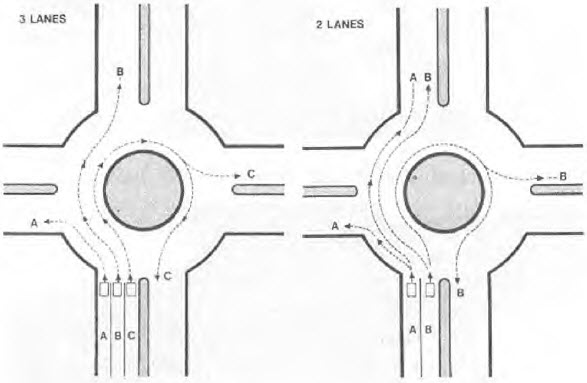|
| 66. Do not make a U-turn at any road intersection, junction or any opening in a road divider unless permitted to do so by a traffic sign. |
| Following Distances |
67. To be able to adjust your speed so that you can stop within the space between you and the vehicle in front, you must allow at least one car length for every 16 km/h of your speed.
[S 3173/2019 wef 01/12/2019] |
| 68. Watch for the stop light on the car in front and the traffic ahead of the car in front. |
| Speed and Stopping Distances |
69. Be aware that the stopping distance of a moving vehicle consists of the distance travelled by the vehicle when a driver reacts, and the braking distance of the vehicle.
[S 3173/2019 wef 01/12/2019] |
| Road Junctions |
69A. When approaching a junction, you must observe the following:
|
| 70. When approaching a junction with a major road, slow down gradually and give way to traffic on the major road. Where there is a “STOP” sign, stop at the major road. |
| 71. Where there are no traffic lights, give way signs or stop signs, give way to all traffic on your right, including cyclists. See illustrations in paragraph 69A. [S 3173/2019 wef 01/12/2019] |
| 72. At a junction look right, then left, then right again. Do not move off until you are sure that it is safe to do so. [S 3173/2019 wef 01/12/2019] |
| 73. Well before you turn right at a junction, take full account of the position and movement of traffic behind you. Signal your intention early, and drive cautiously towards the centre of the junction. Give way to approaching vehicles and crossing pedestrians adjacent to you. Wait until it is safe to cross or wait for the green arrow signal to appear. Turn swiftly to the correct lane, keeping a look-out for pedestrians crossing at the junction. [S 3173/2019 wef 01/12/2019] |
| 74. If you intend to turn left, keep to the left, signal in good time, and do not swing out to the right either before or after making the turn. |
| 75. When turning left or right, drivers must always give way to vehicles going straight on and to pedestrians. |
76. Slow down when approaching a roundabout, and give way to traffic on your right.
|
| Safety of Pedestrians, Pedal Cyclists, etc. |
| 77. Pedestrians, pedal cyclists, riders of power-assisted bicycles or personal mobility devices, and drivers of mobility scooters or motorised wheelchairs have the right of way on pedestrian crossings. [S 244/2019 wef 01/02/2019] |
| 78. When approaching a pedestrian crossing slow down and do not overtake other vehicles. |
79. When approaching a pedestrian crossing always —
|
| 80. At a pedestrian crossing controlled by light signals or by a policeman, give way to pedestrians, pedal cyclists, riders of power-assisted bicycles or personal mobility devices, and drivers of mobility scooters or motorised wheelchairs who are crossing when the signal to stop is given. [S 244/2019 wef 01/02/2019] |
| 81. When a school patrol sign is extended at a pedestrian crossing, vehicles travelling in both directions must stop and remain stationary until the whole crossing is clear and the sign has been removed. |
| 82. Watch for the pedestrian, pedal cyclist, rider of a power-assisted bicycle or personal mobility device, or driver of a mobility scooter or motorised wheelchair who comes out suddenly from behind stationary vehicles and other obstructions. Be very careful near schools and bus stops. When turning at a road junction, give way to pedestrians, pedal cyclists, riders of power-assisted bicycles or personal mobility devices, and drivers of mobility scooters or motorised wheelchairs who are crossing. [S 244/2019 wef 01/02/2019] |
83. When driving (especially on any road without a path beside it) —
|
| Reversing |
| 84. Before you reverse make sure that there are no children or other pedestrians or obstructions in the blind area behind you. |
| 85. Do not reverse from a side road onto a main road. |
| 86. If your view to the rear is restricted, get help when reversing. |

